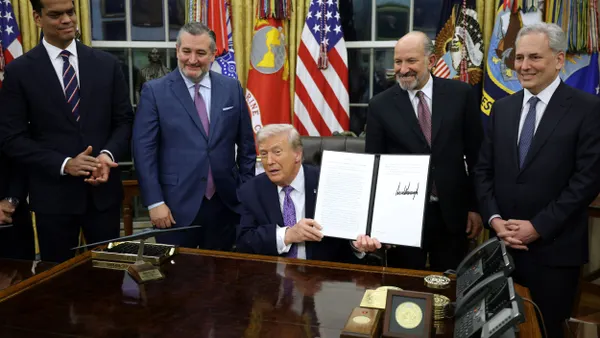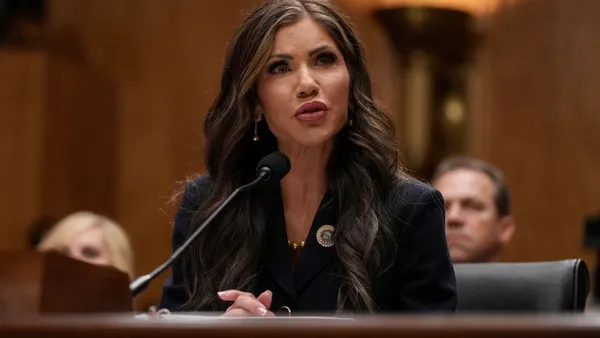Dive Brief:
- The U.S. Department of Labor (DOL) has limited joint employer liability under the Fair Labor Standards Act (FLSA) in final regulations published Jan. 12.
- The rule, slated to be published in the Federal Register Jan. 16, spells out the circumstances under which more than one business can be held liable for FLSA violations. It largely adopts the "four-factor balancing test" from DOL's proposed version of the rule while also clarifying that an employee's "economic dependence" on an employer does not determine whether it is a joint employer. The rule also provides additional examples of business models, business practices and contractual agreements that do not make joint employer status more or less likely under the FLSA.
- The rule is set to take effect March 16, 2020, or 60 days from the date of publication.
Dive Insight:
Employer advocates who spoke to HR Dive had a mixed reaction to the final rule, though they generally agreed that an updated standard is helpful for compliance purposes.
DOL revised the second "prong" of the four-part test to state that an employer must supervise and control an employee's work schedule "to a substantial degree" to support a claim of joint employment. This limit differs from what some employer advocates had hoped — namely, that employers would have to demonstrate "day-to-day" supervision and control of an employee's work schedule — Marty Heller, partner at Fisher Phillips, told HR Dive in an interview. "I think that loosens what this prong might mean," Heller said.
The final rule also states that, while the four-factor test "should determine joint employer status in most cases," additional factors may be considered, "but only if they are indicia of whether the potential joint employer exercises significant control over the terms and conditions of the employee's work."
That could leave an interesting question for federal courts to decide, said Heller, adding that while he doesn't think DOL intended for this component to be an "end-around" to the four-factor test, courts may not necessarily agree. A circuit split over joint employment has persisted, and in 2018, the U.S. Supreme Court declined to weigh in on a case that could have provided clarity. "I'll be very curious to see if we look back in five years, how do courts deal with the fact that there are other factors," Heller said.
But not everyone shares concerns about an "end-around." Mark Kisicki, shareholder at Ogletree Deakins, told HR Dive in an interview that the FLSA requires the consideration of other factors. "The DOL has done everything it can to make clear that the other factors are relevant to the extent that they show control, the actual exercise of control rather than the potential to control."
DOL's announcement follows decisions by other federal entities to pursue rulemaking on joint employment. The National Labor Relations Board (NLRB) is in the process of finalizing its rule, which contains slightly similar provisions to DOL's rule. The U.S. Equal Employment Opportunity Commission (EEOC) announced last November that it would also begin rulemaking on the subject. Heller said he expects EEOC to take the DOL's rule into account and "further in the direction" of what the NLRB proposed.
Employers have advocated for a unified joint employer definition to simplify compliance, but this may be challenging, according to Kisicki. That's in part because the National Labor Relations Act and the FLSA deal with different interests. "They can't have a standard that is exactly the same because of those interests."
Kisicki advised employers to regularly evaluate their relationships with other companies and vendors to make sure they do not treat workers in ways that signify employment under the new standard. "Those lines can get blurred instantly," he said.














